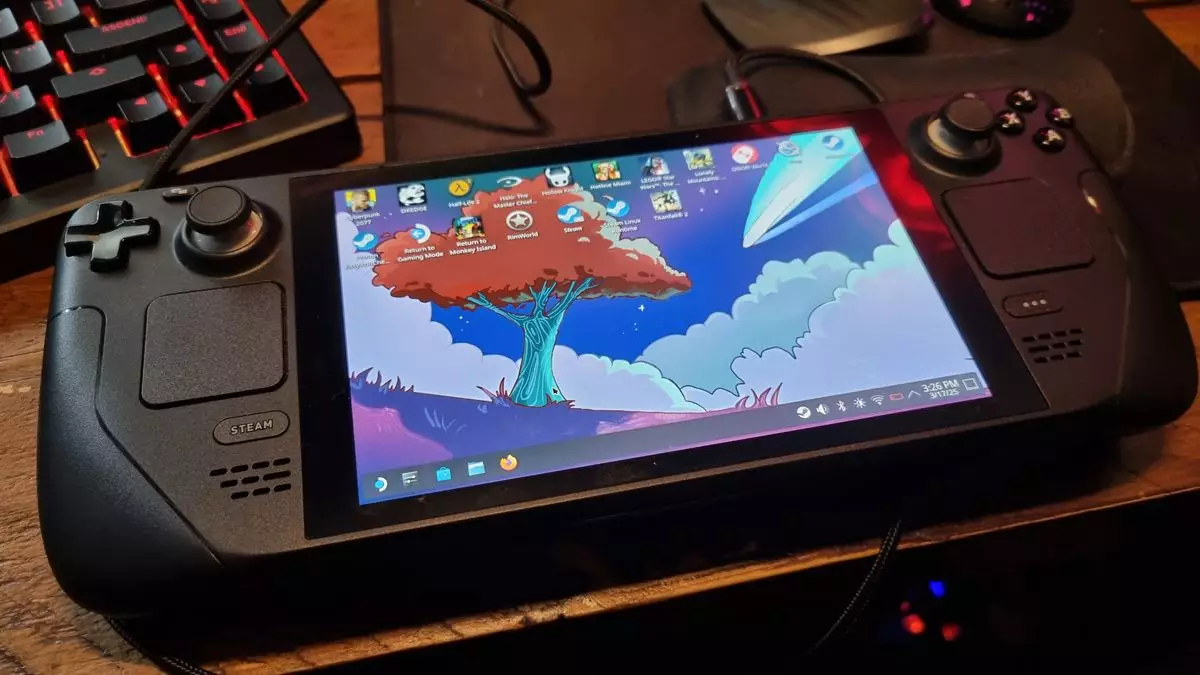Since its inception alongside the original Steam Deck in 2022, SteamOS has carved out a niche for itself in the realm of handheld gaming, merging the power of PC gaming with portability. However, despite its promising start, the real test of SteamOS’s mettle is yet to unfold outside of Valve’s proprietary devices. The forthcoming release of SteamOS on the Lenovo Legion Go S marks a significant step towards solidifying its role in the expanding universe of mobile gaming. This move signifies not just an expansion but a bold assertion from Valve that they are committed to diversifying their ecosystem beyond the initial offering.
The preview update—version 3.7.0, dubbed the “Pi Day” update—hints at a future ripe with possibilities. While currently limited to the Legion Go S, the potential for more devices is palpable. As portable gaming technology continues to evolve, the demand for versatile operating systems that provide seamless integration with popular platforms, like Steam, is greater than ever. With Valve establishing groundwork for non-Steam Deck support, they seem poised to capitalize on this growing market. The enthusiasm around this update reflects a community eager for innovative systems that enhance their portable gaming experiences.
Aesthetic Enhancements and Functional Upgrades
One of the standout features of the Pi Day update is the inclusion of Plasma 6.2.5, which transforms how users interact with the desktop mode on their devices. The updated interface, boasting dynamic floating panels and a reorganized settings menu, reimagines user engagement. Nostalgically invoking the visual effects of ’90s hacker films, the return of the cube effect is not merely a gimmick; it represents an understanding of aesthetics in technology. Engaging visuals can enhance user satisfaction and improve navigation efficiency, which is crucial for gamers who are often scrutinizing settings and performance metrics.
Yet, amidst the charm of new wallpapers and interface design, it’s essential to acknowledge that such updates may come with hiccups—particularly in a preview state. The glitches and bugs present serve as a reminder that innovation often carries an inherent risk. For users reliant on an uninterrupted gaming experience, issues such as unexpected desktop flashes or hangs are understandably frustrating. Nevertheless, embracing these temporary lapses is a small price to pay for the potential marvels ahead.
Bluetooth Connectivity and Compatibility Advancements
Another critical focal point of the update is the substantial improvements in Bluetooth device support and compatibility with external displays when connected via the Deck Dock. In a landscape where connectivity plays an essential role, the ability to easily link peripherals and optimize display performance transforms handheld gaming from a solitary experience to a multifaceted one. Players can prioritize convenience without compromising their gaming enjoyment.
This shift towards bolstering compatibility highlights Valve’s understanding of the user experience as multifaceted, recognizing that while handheld devices can stand alone, they often thrive in environments that allow for enhanced interaction. Whether it’s utilizing Bluetooth headsets for immersive audio or connecting to larger monitors for a more cinematic experience, these features speak volumes about what SteamOS intends to represent: flexibility and integration in gameplay.
The Challenge of Competition and Market Dynamics
Despite these advances, some skeptics may argue that it could be too little, too late. Other handheld gaming PCs running Windows 11 are already thriving with their user-friendly interfaces that facilitate smooth launching and organization of games. The established ecosystem among these competitors poses a significant challenge for Valve to overcome if SteamOS is to gain traction beyond its native hardware.
However, while some alternatives offer functionality, they often lack the seamless integration with Steam, which has become a defining hallmark of Valve’s operating system. The holistic experience SteamOS provides—where users can access their game library directly from the operating system—ensures a level of convenience that can draw players back to the platform. Although the viability of SteamOS on third-party devices may still be under scrutiny, gaming enthusiasts welcome any step that brings Valve closer to fully realizing its potential in handheld gaming.
In a world where the gaming landscape is continuously shifting, Valve’s commitment to developing SteamOS feels both refreshing and necessary. The evolution from a singular focus on the Steam Deck to an inclusive ecosystem capable of supporting various handheld devices signifies a promising journey ahead for both the company and its user base. While the path is fraught with challenges, the allure of a cohesive gaming experience on-the-go is undeniably compelling.

